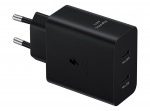Buying a home in Oklahoma
According to Zillow, the typical home value in Oklahoma is lower than the typical value of $259,906 across the US. The typical home value in Oklahoma is $143,173, and home values have increased 7.6% over the past year.
Oklahoma first-time homebuyer programs
- Homebuyer Down Payment Assistance: The Oklahoma Housing Finance Agency provides down payment assistance loans for 3.5% of your mortgage. You may get a reduced interest rate if you’re a teacher, state employee, or first responder.
- Down payment or closing cost assistance: If you live in Oklahoma City, you may qualify for up to $15,000 toward down payment or closing costs from the local government.
- Federal Housing Administration mortgage: You can get a down payment of 3.5% with a credit score of at least 580, or get a mortgage with a credit score between 500 and 580 with 10% down using this loan, which is also called an FHA loan.
- United States Department of Agriculture mortgage: These loans, also called USDA loans, can be useful if you are a low-to-moderate income borrower looking to buy a home in a rural or suburban area.
- Veterans Affairs mortgage: These mortgages, also called VA loans, are for active-service military members or veterans, or spouses of members who have died and can provide lower interest rates than conventional mortgages.
Refinancing your mortgage in Oklahoma
Mortgage refinance rates are at all-time lows right now, so it could be a good idea to switch your current mortgage for one with a better interest rate – especially if the new rate would be significantly lower.
You may decide to refinance with the same lender that gave you your initial mortgage, but it’s not always the best idea. A different lender may offer you a better deal the second time around. Shop around for a company that will offer the best interest rate and charge relatively low fees.
How to get a low interest rate on your mortgage
Here are some tips for landing a good interest rate on your mortgage:
- Save more for a down payment. With a conventional loan, you may be able to put down as little as 3%. But lenders reward a higher down payment with a better interest rate. Mortgage rates should stay low for a while, so you may have time to save a bigger down payment.
- Increase your credit score. Many lenders require a minimum credit score of 620 to receive a mortgage. But you can land a better interest rate with a higher score. The most important factor for boosting your score is to pay all your bills on time.
- Lower your debt-to-income ratio. Your DTI is the amount you pay toward debts each month, divided by your gross monthly income. Most lenders want to see a DTI of 36% or less for a conventional mortgage, but a lower DTI can result in a lower rate. To improve your DTI, pay down debts or consider opportunities to increase your income.
- Choose a federally backed mortgage. If you’re eligible, you might consider a USDA loan (for low-to-moderate-income borrowers buying in a rural area), a VA loan (for military members and veterans), or an FHA loan (not designated for any particular group). These loans typically come with lower interest rates than conventional mortgages. As a bonus, you won’t need a down payment for USDA or VA loans.
Improving your financial situation and choosing the right type of mortgage for your needs can help you get the best interest rate possible.
Historic mortgage rates for Oklahoma
By looking at the average mortgage rates in Oklahoma since 2010, you can see trends for 30-year fixed mortgages, 15-year fixed mortgages, and 7/1 adjustable mortgages:
Seeing how today’s rates compare to historic Oklahoma mortgage rates may help you decide whether you’d be getting a good deal by getting a mortgage or refinancing now.
How do 30-year fixed rates work?
A 30-year fixed mortgage comes with a higher interest rate than a shorter-term fixed-rate mortgage. The 30-year fixed rates used to be higher than adjustable rates, but 30-year terms have become the better deal recently.
Your monthly payments on a 30-year term will be lower than on a shorter-term mortgage. You’re spreading payments out over a longer period of time, so you’ll pay less each month.
You’ll pay more in interest in the long term with a 30-year term than you would for a 15-year mortgage, because a) the rate is higher, and b) you’ll be paying interest for longer.
How do 15-year fixed rates work?
A 15-year fixed-rate mortgage is more affordable than a 30-year term in the long run. The 15-year rates are lower, and you’ll pay off the loan in half the amount of time.
However, your monthly payments will be higher on a 15-year term than a 30-year term. You’re paying off the same loan principal in half the time, so you’ll pay more every month.
How do adjustable rates work?
While a fixed-rate mortgage locks in your rate for the entire loan term, an adjustable-rate mortgage locks in the rate for the first few years, then changes it periodically. For example, with a 5/1 ARM, your rate stays the same for the first five years, then increases or decreases once per year.
ARM rates are low right now, but you still might want to go with a fixed-rate mortgage instead. It could be in your best interest to lock in a low rate with a 30-year or 15-year fixed-rate mortgage rather than risk your rate increasing with an ARM.
Adjustable rates used to be lower than fixed rates during the introductory rate period, but this is no longer the case. This means ARMs are less beneficial than they used to be.
If you’re considering an ARM, then you should still ask your lender about what your individual rates would be if you chose a fixed-rate versus an adjustable-rate mortgage.
Mortgage and refinance rates by state
Alabama
Alaska
Arizona
Arkansas
California
Colorado
Connecticut
Delaware
Florida
Georgia
Hawaii
Idaho
Illinois
Indiana
Iowa
Kansas
Kentucky
Louisiana
Maine
Maryland
Massachusetts
Michigan
Minnesota
Mississippi
Missouri
Montana
Nebraska
Nevada
New Hampshire
New Jersey
New Mexico
New York
North Carolina
North Dakota
Ohio
Oklahoma
Oregon
Pennsylvania
Rhode Island
South Carolina
South Dakota
Tennessee
Utah
Vermont
Virginia
Washington
Washington DC
West Virginia
Wisconsin
Wyoming
Powered by WPeMatico






